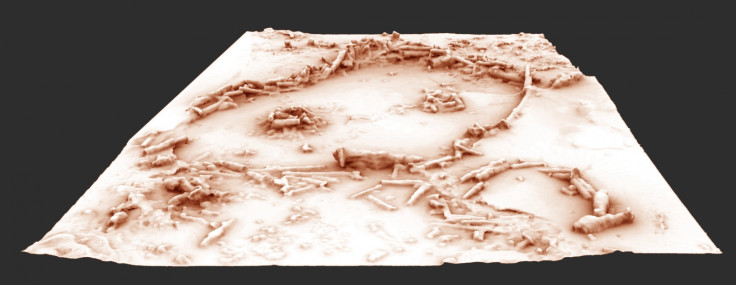Bruniquel cave: Mystery structures created from stalagmites point to complex Neanderthal society
Ancient ring-like structures created from stalagmites have been discovered in a cave in France. Dating back 176,000 years, scientists believe they were created by Neanderthals, pointing to a far more complex culture than previously thought.
The prehistoric structures, found in the cave of Bruniquel, in southern France, have puzzled researchers for about two decades. Bruniquel was discovered in 1991, but the death of the scientist who led the first exploration of the cave as well as the fact it is located on the grounds of a private residence, means research projects were slow to take off.
Since 2014, a team has worked to date the constructions and prove its anthropogenic origins. In a study published in Nature, they are now able to say that the constructions - arranged in a ring-like shape in the depth of the cave more than 300 metres away from the entrance - were most likely established by a well-organised and structured group of Neanderthals.
These early humans appeared to have a more complex culture and a greater control over their environment than previously believed.
Mastering the underground world
The dating of the structure is based on uranium-series dating of stalagmite re-growths, combined with the dating of stalagmite tips. This method proves a reliable 176,500-years-old, with a confidence interval of about 2,000 years. This corresponds to a time during which the only Homo species in Europe were early Neanderthals.
Jacques Jaubert from Universite Bordeaux I led the project. He said the most surprising element of the research was finding signs that the early Neanderthals had succeeded in mastering the underground environment.
"The location and the topography of the structures is key here. They are far from the entrance and the day of light, which suggests people were organised, had the skills to enter deep in the cave and to transport materials inside it, as well as to light it up", he told IBTimes UK.

The mastery of the dark, underground world was thought to have occurred much later. The earliest irrefutable proof of such skills had been found in the Chauvet cave, and was dated to around 36,000 years ago.
Mastering this environment is considered a major step in human modernity so showing that humans who lived 176,000 years ago had already done so, is an important discovery.
Traces of Neanderthal culture
The finding is also crucial because very little is known about Neanderthal cultures, particularly early ones in this instance. The regular geometry of the stalagmite circles, the arrangement of broken stalagmites and several traces of fire in Bruniquel cave show they were probably more skilled than earlier imagined.

The complexity of the structures and the volume of materials carried in the cave suggest the group was well-organised and had a real cultural project when they decided to create the structures.
"The attribution of the Bruniquel constructions to early Neanderthals is unprecedented in two ways," the researchers wrote. "First, it reveals the appropriation of a deep karst space (including lighting) by a pre-modern human species. Second, it concerns elaborate constructions that have never been reported before, made with hundreds of partially calibrated, broken stalagmites that appear to have been deliberately moved and placed in their current locations, along with the presence of several intentionally heated zones.
"Our results therefore suggest that the Neanderthal group responsible for these constructions had a level of social organisation that was more complex than previously thought for this hominid species."
Researchers say they have several ideas as to what the purpose of the structure was, including holding symbolic meaning or forming some sort of refuge. Further research inside the cave will try to ascertain the actual function of the structures.
© Copyright IBTimes 2025. All rights reserved.





















